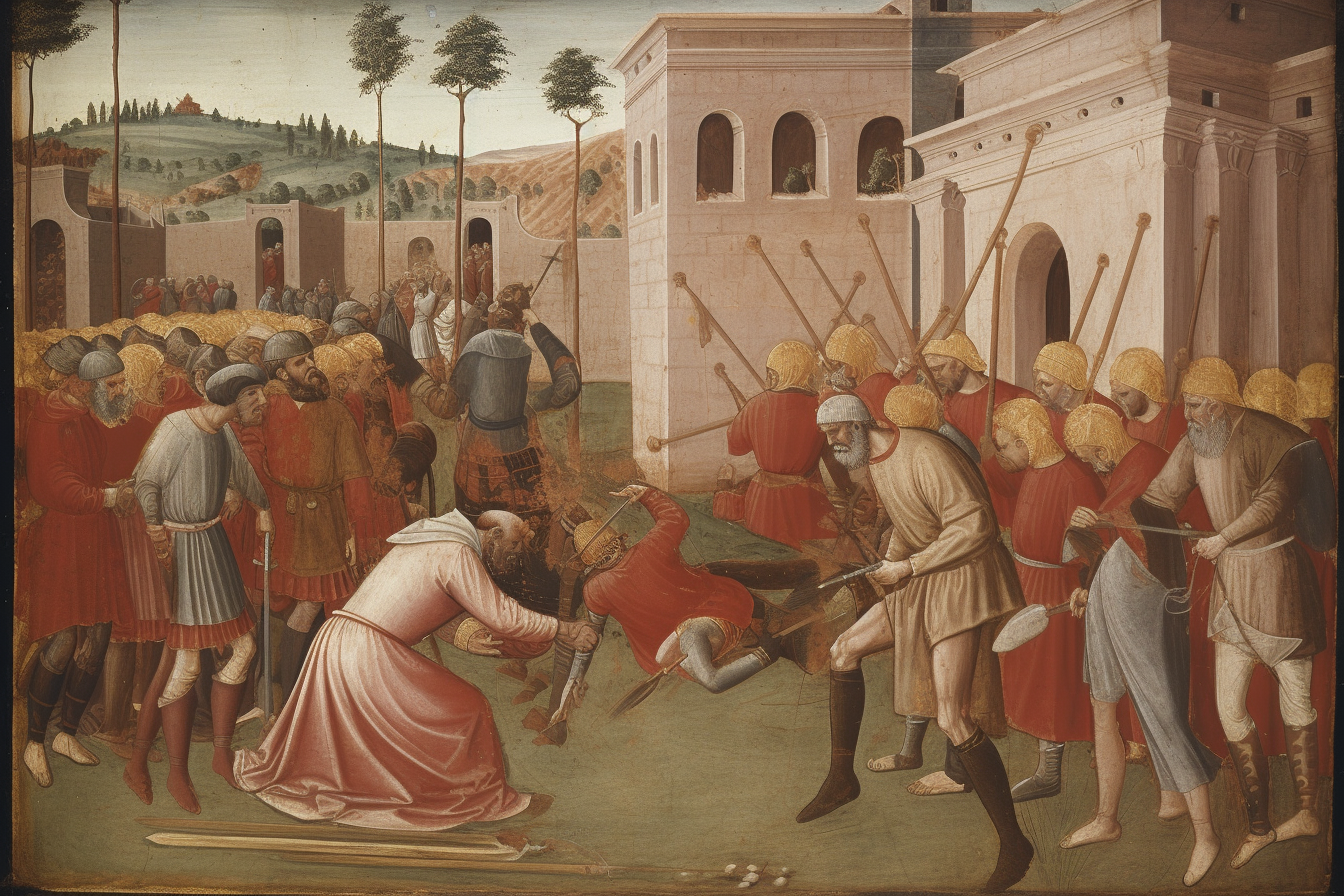
St. Antipas
Saint Antipas
St. Antipas: A Glimpse into a Time of Faith and Turmoil
When They Lived:
St. Antipas, also known as Antipas of Pergamum, lived during the late 1st century and early 2nd century AD. He is believed to have been born around 62 AD and passed away in the year 92 AD.
Where They Lived:
St. Antipas resided in the ancient city of Pergamum, which was situated in what is now modern-day Turkey. Pergamum was renowned for its rich history, cultural significance, and proximity to important trade routes of the time.
Notable World Events During the Time of Their Life:
- The Great Fire of Rome (64 AD): A catastrophic fire that ravaged Rome, Emperor Nero was rumored to have fiddled while the city burned. This event led to the persecution of Christians, marking a tumultuous period for early believers like St. Antipas.
- Construction of the Colosseum (70-80 AD): The construction of the iconic Roman Colosseum took place during this period. The arena would later witness countless gladiatorial contests and public spectacles, becoming a symbol of Roman entertainment.
- Completion of the Mishnah (c. 200 AD): Although slightly later than St. Antipas’ time, the compilation of the Mishnah—an essential text in Jewish law—began during this period. This marked a significant milestone in Jewish scholarship and religious preservation.
- Pliny the Younger’s Correspondence (c. 100 AD): The Roman author Pliny the Younger’s letters provide valuable insights into the social, political, and cultural aspects of the time. His writings shed light on early Christian practices and interactions with Roman authorities.
- Halley’s Comet Appearance (87 AD): Halley’s Comet made a notable appearance during St. Antipas’ lifetime. This celestial event sparked curiosity and speculation, reflecting the growing interest in scientific observation.
Their Patronage:
St. Antipas is recognized as the patron saint of dentists and those suffering from dental issues. This unique patronage stems from a hagiographical account in which St. Antipas supposedly had his teeth violently extracted during his martyrdom, drawing a connection between his suffering and dental ailments.
- When he lived: Saint Antipas lived in the first century AD. While the exact dates of his birth and death are not firmly established, he is believed to have been martyred during the reign of the Roman Emperor Nero (54–68 AD) or Emperor Domitian (81–96 AD).
- Where he lived: He lived in Pergamum, a significant city of the Roman province of Asia, which corresponds to modern-day Turkey.
- Notable world events during the time of his life: This was a period of significant change in the ancient world. In the mid-first century AD, the Roman Empire was at the height of its power. Nero became Emperor in 54 AD, and his rule was marked by extravagance, tyranny, and the Great Fire of Rome in 64 AD. In the Far East, Buddhism was spreading in China. Meanwhile, the construction of the famous Nabataean rock city of Petra was completed in present-day Jordan. Back in Rome, the Flavian Amphitheater, better known as the Colosseum, began construction under the reign of Emperor Vespasian around 70 AD.
- His patronage: Saint Antipas is known as the patron saint of toothaches and diseases of the teeth.
Saint Antipas, an intriguing figure from the annals of early Christian history, is a compelling testament to the power of faith. His life and martyrdom provide a timeless example of resolute commitment to one’s beliefs, even in the face of extreme adversity.
St. Antipas in Holy Scripture
The Bible makes a single, albeit impactful, reference to Saint Antipas in the Book of Revelation (2:13), identifying him as a martyr and faithful witness to Christ Jesus. Despite his brief mention in the scriptures, the portrayal of Antipas resonates powerfully. He is described as a minister laboring in Pergamum, where Satan had his seat, an indication of the immense spiritual adversity that the saint encountered.
The Bishop of Pergamum
While historical records do not provide concrete evidence, traditional Eastern Orthodox Christian narratives describe Antipas as the Bishop of the Christian church at Pergamum. Appointed by John the Apostle during Emperor Nero’s reign, Antipas is believed to have spent his years faithfully ministering, witnessing, and upholding the Christian faith in the heart of a city known for its deeply rooted pagan beliefs.
Despite the mounting pressures and threats to his life, Saint Antipas remained undeterred in his faith. This unwavering commitment is beautifully encapsulated in his reputed response when cautioned that the entire world was against him: “Then I am against the whole world!”
Martyrdom of Saint Antipas
The climax of Antipas’s commitment to his faith came when he was martyred under the reign of either Nero or Domitian. According to tradition, he was burned to death on a brazen bull-shaped altar because he would not renounce his faith in Christ Jesus. His martyrdom remains an inspiring testimony to the power of faith in the face of overwhelming opposition.
The Miracle of Saint Antipas
Even in death, Saint Antipas continued to inspire the faithful. According to tradition, a unique phenomenon referred to as the “manna of the saints” is associated with him. It is believed that oil, seen as a blessing, secretes from his relics, further accentuating the saint’s miraculous nature.
Saint Antipas, the Protector
Known as a healer, Saint Antipas is invoked for relief from toothache and diseases of the teeth. This association offers us a relatable facet of the saint, who is seen as a protector and healer, providing comfort in everyday struggles.
The Feast of Saint Antipas
On April 11, Eastern Christianity commemorates the feast day of Saint Antipas, remembering his unwavering faith and sacrifice.
Saint Antipas and Pergamum
It’s important to note that the spiritual legacy of Saint Antipas is deeply intertwined with the city of Pergamum, a significant historical city known for its wealth, power, and influence in ancient times. Once a bustling center for science, literature, and art, Pergamum played a vital role in Western civilization’s development. Yet, amidst its grandeur, it was also a battleground for spiritual warfare, a testament to Antipas’s courage and determination.
Conclusion
In conclusion, while specific details about Saint Antipas’s life are sparse and rooted in tradition, the known aspects of his life provide a powerful image of an unyielding Christian martyr. His legacy continues to inspire the faithful, reminding us of the power of unwavering faith and the everlasting influence of saintly lives.



